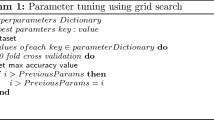Abstract
Emotion recognition in artificial intelligence is a challenging factor. Recent years have seen a rise in interest in emotion analysis based on EEG signals due to many factors, including the availability of huge EEG datasets, developments in Brain-Computer interface (BCI) devices, and discoveries in machine learning. Due to its high temporal precision, portability, and relatively low cost of data collection, EEG is a viable option for researching the brain correlates of numerous cognitive activities, including emotion. The user's capacity to generate these signals is indicative of how well their brain processes information across a variety of cognitive, emotional, and physical domains. Important feature values must be extracted from these raw signals, which is still an essential part of the deployment process. In order to better understand the brain's activity, this study explains how to use principal component analysis (PCA) and power spectral entropy (PSE) to extract characteristics from an EEG signal. In this analysis, we evaluate how well-known classification algorithms fare when used on the recovered features: the support vector machine (SVM), the K-nearest neighbors (KNN), and the Naive Bayes (NB) classifier. All of the simulations were carried out in MATLAB using a HEADIT dataset. The results reveal that the suggested classifiers outperform the standard method in predicting emotional states.
Access this chapter
Tax calculation will be finalised at checkout
Purchases are for personal use only
Similar content being viewed by others
References
George FP, Shaikat IM, Hossain PSF, Parvez MZ, Uddin J (2019) Recognition of emotional states using EEG signals based on time-frequency analysis and SVM classifier. Int J Electr Comput Eng 9:1012–1020
Alhagry S, Aly A, Reda A (2017) Emotion recognition based on EEG using LSTM recurrent neural network. Int J Adv Comput Sci Appl 8:8–11
Yin Y, Zheng X, Hu B, Zhang Y, Cui X (2020) EEG emotion recognition using fusion model of graph convolutional neural networks and LSTM. Appl Soft Comput 100:106954
Cimtay Y, Ekmekcioglu E (2020) Investigating the use of pretrained convolutional neural network on cross-subject and cross-dataset EEG emotion recognition. Sensors 20:2034
Wei C, Chen L-L, Song Z-Z, Lou X-G, Li D-D (2020) EEG-based emotion recognition using simple recurrent units network and ensemble learning. Biomed Sig Process Control 58:101756
Chao H, Liu Y (2020) Emotion recognition from multi-channel EEG signals by exploiting the deep belief-conditional random field framework. IEEE Access 8:33002–33012
Pandey P, Seeja K (2019) Subject independent emotion recognition from EEG using VMD and deep learning. J King Saud Univ Comput Inf Sci 11:1–9
Misulis KE, Abou-Khalil B, Sonmezturk H, Ess KC (2022) Atlas of EEG, seizure semiology, and management. Oxford University Press, Oxford
Michielli N, Acharya UR, Molinari F (2019) Cascaded LSTM recurrent neural network for automated sleep stage classification using single-channel EEG signals. Comput Biol Med 106:71–81. https://doi.org/10.1016/j.compbiomed.2019.01.013
Qazi E-U-H, Hussain M, Aboalsamh H, Ullah I (2019) Automatic Emotion Recognition (AER) system based on two-level ensemble of lightweight deep CNN models. arXiv [Preprint]. https://doi.org/10.48550/arXiv.1904.13234
Korotkova T, Ponomarenko A, Monaghan CK, Poulter SL, Cacucci F, Wills T et al (2018) Reconciling the different faces of hippocampal theta: the role of theta oscillations in cognitive, emotional and innate behaviors. Neurosci Biobehav Rev 85:65–80. https://doi.org/10.1016/j.neubiorev.2017.09.004
Newson JJ, Thiagarajan TC (2019) EEG frequency bands in psychiatric disorders: a review of resting state studies. Front Hum Neurosci 12:521. https://doi.org/10.3389/fnhum.2018.00521
Ramzan M, Dawn S (2019) Learning-based classification of valence emotion from electroencephalography. Int J Neurosci 129:1085–1093
Fitzgerald JM, Gorka SM, Kujawa A, DiGangi JA, Proescher E, Greenstein JE et al (2018) Neural indices of emotional reactivity and regulation predict course of PTSD symptoms in combat-exposed veterans. Prog Neuropsychopharmacol Biol Psychiatry 82:255–262
Suhaimi NS, Mountstephens J, Teo J (2020) EEG-based emotion recognition: a state-of-the-art review of current trends and opportunities. Comput Intell Neurosci 2020:8875426
Topic A, Russo M (2021) Emotion recognition based on EEG feature maps through deep learning network. Eng Sci Technol Int J 24:1442–1454. https://doi.org/10.1016/j.jestch.2021.03.012
Wang J, Wang M (2021) Review of the emotional feature extraction and classification using EEG signals. Cogn Robot 1:29–40. https://doi.org/10.1016/j.cogr.2021.04.001
Pereira ET, Gomes HM, Veloso LR, Mota MRA (2018) Empirical evidence relating EEG signal duration to emotion classification performance. IEEE Trans Affect Comput 12:154–164. https://doi.org/10.1109/TAFFC.2018.2854168
Liu J, Wu G, Luo Y, Qiu S, Yang S, Li W et al (2020) EEG-based emotion classification using a deep neural network and sparse autoencoder. Front Syst Neurosci 14:43. https://doi.org/10.3389/fnsys.2020.00043
Iyer A, Das SS, Teotia R, Maheshwari S, Sharma RR (2023) CNN and LSTM based ensemble learning for human emotion recognition using EEG recordings. Multimedia Tools Appl 82(4):4883–4896
Author information
Authors and Affiliations
Corresponding author
Editor information
Editors and Affiliations
Rights and permissions
Copyright information
© 2023 The Author(s), under exclusive license to Springer Nature Singapore Pte Ltd.
About this paper
Cite this paper
Babeetha, S., Sridhar, S.S. (2023). EEG Signal Feature Extraction Using Principal Component Analysis and Power Spectral Entropy for Multiclass Emotion Prediction. In: Shakya, S., Tavares, J.M.R.S., Fernández-Caballero, A., Papakostas, G. (eds) Fourth International Conference on Image Processing and Capsule Networks. ICIPCN 2023. Lecture Notes in Networks and Systems, vol 798. Springer, Singapore. https://doi.org/10.1007/978-981-99-7093-3_29
Download citation
DOI: https://doi.org/10.1007/978-981-99-7093-3_29
Published:
Publisher Name: Springer, Singapore
Print ISBN: 978-981-99-7092-6
Online ISBN: 978-981-99-7093-3
eBook Packages: Intelligent Technologies and RoboticsIntelligent Technologies and Robotics (R0)




